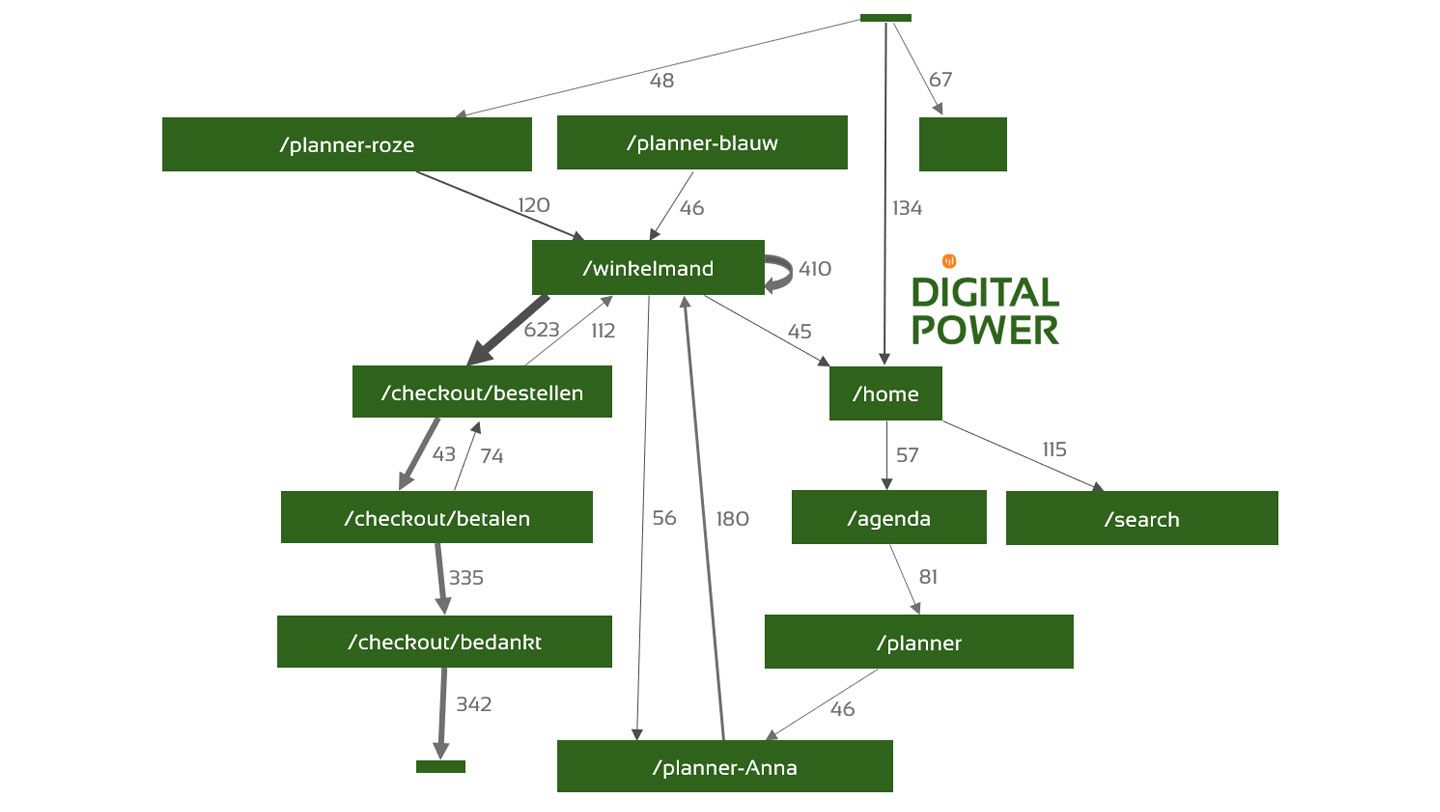Process Mining as input for (online) customer journeys
Map out the steps your target audience is taking
- Article
- Customer Experience

Data is increasingly being used to map customer journeys. Which makes sense, because we collect a lot of data in our analytics tool around the online part of the journey. A technology that can lead to valuable insights but is often forgotten is process mining.
By using process mining you can visualise the actual paths followed on your website. Based on these insights, you can then proceed to optimise. In this article we explain how you can use process mining for (online) customer journeys.
What is process mining?
Process mining is a collection of technologies with which you can visualise and analyse the actual course of business processes using event logs. There is the possibility to screen a process in detail for pain areas and deviations.
The aim of process mining is to provide insight into processes in order to find any discrepancies between the ideal process and the actual process. When these discrepancies are mapped out, it is then possible to optimise from there.
Applicability of process mining
In the first instance, process mining is therefore intended to map actual business processes. This technology can be used, for example, to map out a customer service or recruitment process.
You can indicate how much time each part of the process takes and which (unexpected) steps are taken. You then use these insights to make and optimise data-driven choices.
You can also use process mining to provide insight into customer journeys. It is possible to segment website data based on certain customer behaviour, marketing activity or other important characteristics. This allows you to zoom in on specific behaviour. Segmentation can be based on sessions, users, customer or object.
Session-based segmentation
The pages that people visit (event logs) are linked to a timestamp. The process mining technology can therefore also be applied to place website pages in the correct order.
This makes it possible to visualise which paths users take in a session on your website. You can also classify the pages to make it more abstract, such as "product page" and "category page" instead of the URLs or page names.
The advantage of this is that you know which pages someone actually sees on your website for purchasing a product/service. As a result, you also know more about the user experience. You can compare this actual route with the desired route and optimise based on that.
Imagine: you suspect that most users navigate to product 'X' via your menu navigation. Process mining then shows that the majority of users use the search bar. You can use this insight to improve the findability of product 'X' in the menu navigation.

User-based segmentation
In addition to analysing the data within a visit, you can also look at the behaviour across the different visits. This gives you more insight into the customer journey over a longer period of time.
Customer-based segmentation
From a customer-oriented view, you grab data not only from your touchpoint, but from all touchpoints with the organisation, from email, website, customer contact centre, to the use of the product, or the return of a package in e-commerce.
Object-based segmentation
You can also focus on other factors. Think, for example, of an order that needs to be delivered, a specific booking or a specific flight in order to map out a certain flow.
Process mining can be quite complex!
To get started with process mining, you need good data. While this is often no problem within a session, you already see more challenges at the user level. If you also want to recognise your customer across different channels and touch points, a good data strategy is essential.
How to use process mining as input for online journeys
Do you want to map the online journey of your users? Then it is especially important that you think carefully about what exactly you want to make transparent. What is your target?
For example, a goal could be: to optimise the customer journey of product 'X', so that the user experience is positively influenced in the longer term. You could then use process mining for the online part. Work from data to insight in six steps!
This is an article by Sanne Kieftenburg, Data Analyst at Digital Power
Sanne analyses (website) data with the aim of optimising websites and the customer experience. She always proceeds keeping the end user and the KPIs in mind.
Data Analystsanne.kieftenburg@digital-power.com
Receive data insights, use cases and behind-the-scenes peeks once a month?
Sign up for our email list and stay 'up to data':